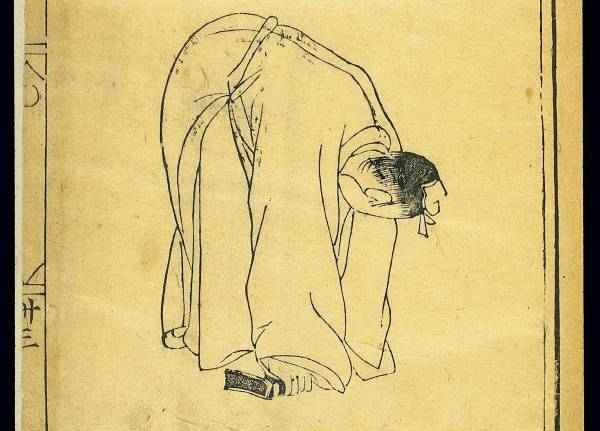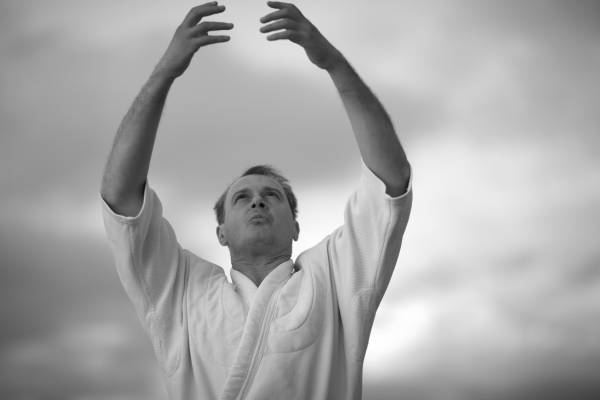How many of you are looking for an edge? What if I told you that with only a daily investment of five to ten minutes that we could dramatically increase your ability to go in the gym?
Martial artist have known about this technique for centuries, and this one little point of emphasis is the bulk of the reason that some of the most well-known fighters of our times were and are capable of mind-blowing power. Speed, explosiveness, and rootedness all manifest from this basic piece of bioenergetic anatomy – the three dantians.
Regarded as the major energy storage facilities in the human body, everything we understand about our physicality, emotional balance, and connection to intuition can be credited to the health and welfare of these three energetic epicenters. Athletes, martial artists, and weightlifters can all benefit tremendously by nurturing this aspect of who they are.
The location of the three dantians.
What Is It and Why Is It Important?
A dantian is simply an energy center. Think of the battery you have in your cell phone. Most of us charge our phones overnight so when we wake the next morning, we have a phone that can get us through our busy day. The dantians, much like that battery, have the potential for robust power that can be utilized for a variety of activities. Conversely, by the end of the day, you are scrambling around for your charger because you have only 2% on your phone and, God forbid, you miss the next important Facebook post. The same is true for the energy centers in the body.
The three dantians are:
- The lower – positioned behind the naval encompassing your lower bowl
- The middle – positioned in your chest where the physical heart is
- The upper – positioned behind the forehead where the physical brain is
Each has an energetic responsibility to keep the human machine operating appropriately. When the three are nurtured, the body, mind, and spirit have a discernable advantage when it comes to physical, mental and spiritual health.
The Lower Dantian Specifically
Anyone who trains the internal martial arts will begin here. The lower dantian (LD) has a myriad of responsibilities for the body. Known in many circles as the “sea of qi,” the LD gathers earth energy and is closely related to jing (or essence). The jing of the body is formed by the kidneys during fetal development and then stored in the kidneys after birth. The jing is fundamentally everything we consider to be physical and material in the body. Kidney jing specifically is responsible for growth, development, sexual maturation, and reproduction.
“The masters of kung fu, the healers in the Qigong world, and the mystics in Daoism all knew/know this and this is why we start at the lower dantian when our training begins.”
Understanding that I could type for days about this, we will move forward knowing that the LD and jing are responsible for our physicality as a whole. When the jing is strong and the LD is full, this person is strong, robust, and full of stamina in all ways and exudes physicality. When the jing is feeble and the LD is uncultivated and weak, this person is frail, aging, and low energy.
Furthermore, the LD is considered the body’s “second brain.” The term “gut feeling” comes from the notion that the LD is the home for kinesthetic feelings, communication, and awareness. Western science follows a similar concept crediting the enteric nervous system as the brain in the gut. Researchers have found that much like the brain in the head, the enteric nervous system sends and receives impulses, records experiences, and responds to emotions. The masters of kung fu, the healers in the Qigong world, and the mystics in Daoism all knew/know this and this is why we start at the lower dantian when our training begins.

A Qigong exercise to treat lumbar pain.
My Own Training
When I started my medical Qigong walk, our first place of cultivation was the LD. I spent my first year cultivating this system alone. What it did for me was enhance my intuition when working on my patients (which is priceless in this style of medicine) and then increased my physicality and ability to produce greater power as a martial artist. I’m a big guy to begin with, but with this continued enhancement to my physicality, my root and my groundedness increased by leaps and bounds. It also created a reservoir of Qi, a seemingly endless resource for my medical practice.
Application to Athletes
In January of this year, my assistant Chris White set out to study the effects of a daily Qigong practice on healthy, weight-trained college athletes. Having experienced the benefits of Qigong for my own body and training, I knew if we could put together a thoughtful study, we could actually measure the efficacy of this type of training.
Prior to conducting this research, Chris and I spent over three months perfecting the Qigong routine to use for the study. In my attempt to create the “perfect program,” I knew that the LD would be the feature of our work. After an entire quarter of trial and error, we had our program locked.
“Some of the numbers produced by the individuals from the Qigong group were so staggering I would not have believed it had I not seen it with my own eyes.”
Using three teams as our participants, we took volunteers who would be willing to wake up early Monday through Friday for a 6:00am Qigong recharge for eight weeks. Both intervention and control groups were given the exact same GPP weight-training program. The loads were determined by obtaining maximals prior to onset of the study (front squat, bench press, deadlift, and vertical jump) and loads were assigned to everyone using the exact same percentages throughout the program.
73 participants completed the eight weeks and we were able to find statistical significance across the board in favor of the Qigong intervention. Some of the numbers produced by the individuals from the Qigong group were so staggering I would not have believed it had I not seen it with my own eyes. We’re talking PED type numbers.
Note: At the time of the writing of this article, Chris is in the manuscript writing phase of his study, preparing to submit to scientific journals for publishing.

It only takes only ten minutes a day to focus on this one aspect of your being.
So Where Can I Begin?
We are all are heading to the gym to achieve some kind of physical goal. Whether it’s prepping for a powerlifting meet, peaking for the CrossFit Games Open, getting ready for a sports season, or simply pushing to fit in a pair of jeans we are dying to wear. I know you’re attempting to do all the right things: your eating is dialed, you are getting eight hours of sleep, you are doing all your self myofascial release work, and you are taking the time to carefully plan and execute your training in the gym. But what I’m saying today in discussing the dantians is that there is something else you can do to aid in all of the above – and it takes only ten minutes a day of focusing on this one aspect of your being.
I do one of these practices below, in conjunction with other Qigong work, in the middle of my day. It helps me recharge from my early mornings and sets me up for the second half push of the day.
Note: The first place you can start this work is outlined in detail in my first article on the topic of Qigong. The breathing portion cannot be understated. Focusing on the envisioning of light building in the LD with each inhalation is the key. Not only will you reap the yin/calming effect of this work, but you will also begin to build and store the qi developed from this exercise in the lower dantian itself.
There are two standing exercises that can be performed to begin the lower dantian cultivation if the breathing suggestion doesn’t vibe with you.
The first is drumming and beating the qi shown here:
The second is the swaying Qigong exercise shown here:
As with any Qigong work, focused intention is the great difference maker when we are talking about effectiveness. My suggested repetition range would be between fifty to 200 cycles. The good news is fifty repetitions of the swaying Qigong exercise can take less than ninety seconds. And 200 repetitions takes perhaps a little more than five minutes. These exercises can be overdone, though, so please stay within the confines of the recommendations presented in the videos.
Disclaimer: As seen in the video, women who are or think they might be pregnant, and women on their menstrual cycle should not do these exercises.
More Like This:
- Qigong: The New (Ancient) Way of Improving Health and Performance
- How Meditation Can Heal Your Adrenal System
- The True Meaning of Having Heart
- New on Breaking Muscle Today
Photo 1 by By Bostjan46 (Own work) [CC0], via Wikimedia Commons.
Photo 2 by Wellcome Images, via Wikimedia Commons.
Photo 3 courtesy of Shutterstock.






